
views
Shoe Polish Brushes
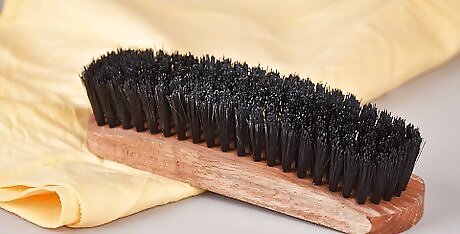
Clean your brush after any residual polish has dried. If you try to clean your brush while the polish is still wet, it’ll just smear and spread around. Wait until it’s completely dry so that it’ll flake away easily. This process is especially important for cleaning dauber brushes. Because they’re used to actually apply shoe polish, they tend to get a lot more buildup.
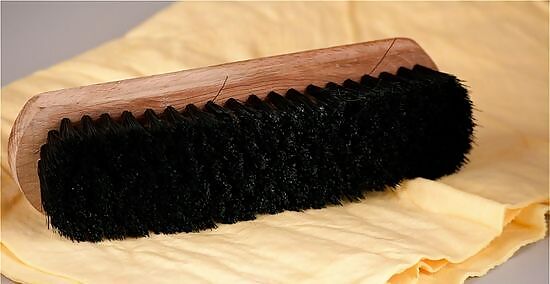
Buff the bristles on a chamois to dislodge residual polish. Use a light-colored chamois so you can see the polish transferring from the brush to the cloth. Simply move the brush back and forth over the cloth a few times until you see the polish coming away. A chamois is a kind of woven cotton often used to polish and shine shoes. Designate a chamois for cleaning your brushes and keep using it until it’s completely covered in polish before switching it out for a new one. If you don’t have a chamois, use a plain rag or towel. There’s no need to buy anything special!
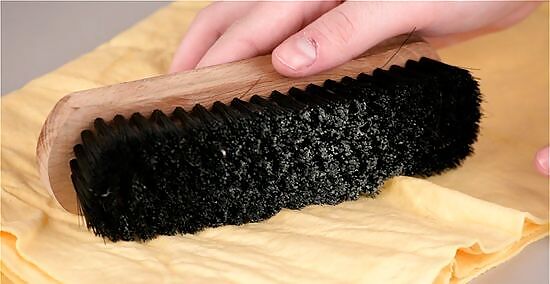
Rotate the brush and buff the bristles in the opposite direction. Turn the brush and continue buffing it with the chamois. This technique ensures all that accumulated and dried polish comes away. Keep in mind that a clean brush won’t necessarily look “clean.” Brushes used with dark polish are going to have permanently-stained bristles.
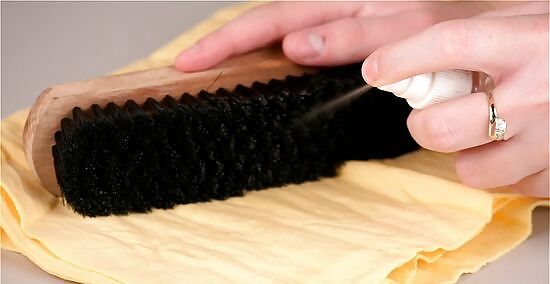
Spray and buff heavily-clogged bristles with a wax softener spray. Purchase a wax softener made for shoe polish. Spritz the brush with the softener, then buff the brush back and forth on a chamois. Repeat as needed until the accumulated polish starts to come loose, and then let any remaining softener dry completely before using the brush to polish your shoes again. Always follow the instructions on the wax softener to make sure you’re using it safely. If you polish your shoes right away while the brush is still wet, the wax softener could mess up the polish on your shoes. This method might be particularly helpful if you’ve been using your horsehair brush for a long time but haven’t cleaned it before.

Use dish soap and hot water for dirty brushes if you don’t have wax softener. Put a few drops of dish soap on the bristles and run them under hot water. While rinsing the brush, buff it back and forth on a chamois to help the polish soften and release from the bristles. It’s not a great idea to use soap and water on your horsehair brushes too often because they can damage the bristles' natural texture. If you opt for this method, use it sparingly. Set the brush on its side on a towel and let it dry completely before using it again or putting it away.

Clean your brush after every shoe polish. It’s a super quick process, so don’t be afraid of too much of a time commitment! Adding a quick clean to your shoe care routine prevents buildup on your brush. That means it’ll be easier to shine your shoes each time. Keep your brushes in a clean, airtight container. This keeps them safe from dust, which could mess up the polish on your shoes.
Paintbrushes

Clean your paintbrushes before the paint has a chance to dry. This is true for any kind of paintbrush, whether it’s synthetic or made of natural hair. Once the paint dries on the brush, it’s incredibly hard to remove. Make it a regular part of your painting routine to wash and dry brushes after each painting session. It’s not enough to just put your brushes bristle-side down in a jar of water—that can actually do a lot of damage to the handle! Plan on washing, rinsing, and laying the brushes out to dry every time you clean them.
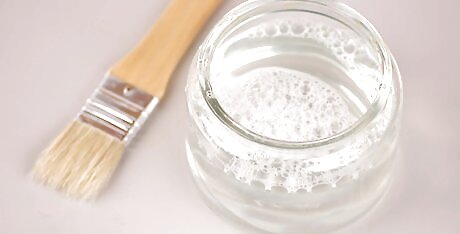
Wash water-based paint off your brushes with dish soap and water. Paints like watercolors and acrylics don’t need anything stronger than everyday dish soap. Though, if you prefer, there are special soaps you can buy from art supply stores that are made specifically for paintbrushes and these types of paints. The benefit of buying a special soap rather than using dish soap is that some contain a conditioning agent. This can help restore bristles on natural-hair brushes and keep them in top condition for longer. If you’re using latex paint, avoid using horsehair or any kind of natural-hair brush. The latex paint absorbs into the bristles, makes them swell, and ruining the fibers over time.
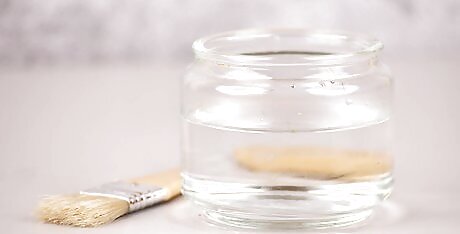
Use a solvent to clean oil-based paint off your paintbrushes. Turpentine and mineral spirits are popular options for oil-based paints. They can be quite abrasive, though, so plan on giving your brushes a quick rinse in soapy water afterward to give them some extra TLC. For the rinsing-off process, use soap with conditioning or moisturizing agents. This should cut down on breakage from the harshness of the solvents over time. When working with harsh solvents, keep them away from open flames and heat sources. Work outside if possible, to protect yourself from the harsh fumes.
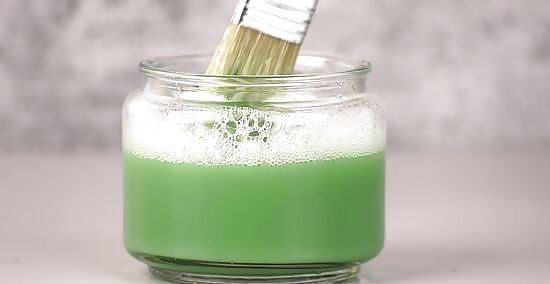
Swish the brush back and forth in a container filled with a cleaning solution. For water-based paint, a jar filled with soapy water works great. For oil-based paint, a jar fill with turpentine or something similar is perfect. Don’t jam the brush against the sides or bottom of the jar. Just gently brush it back and forth in the liquid until the paint starts to come free from the bristles. You could also use a brush comb for larger brushes to help work the solution through the bristles. For oil-based paints, there are special jars you can buy made to simplify cleanup. They have a metal screen inside that traps the paint so you can use the same jar of solvent for multiple cleanings.
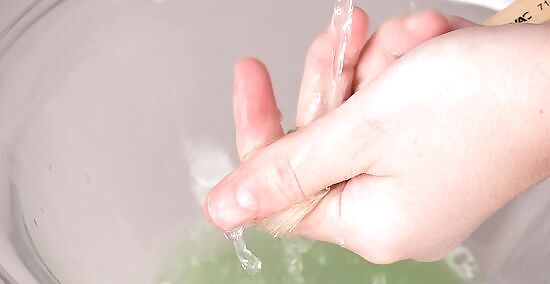
Rinse the brushes in fresh water once they’ve been cleaned. If you notice more color coming away from the bristles, give the brush a second treatment in the cleaning solution. You can use your hands to separate the bristles and make sure they’re clean; just make sure to wear gloves if you’re dealing with oil-based paints to avoid any accidental contact with residual paint. For really big brushes, you may need to rinse the bristles several times to make sure you worked all the paint out. It can take a while, but it’s worth it, especially if you have nice natural-hair brushes.

Lay the brushes flat to dry after reshaping the bristles. Once the brushes are cleaned, use your fingertips to quickly and gently smooth out the bristles so they’re all pointing in the right direction. Then, lay them down on a paper towel or clean cloth and let them dry completely before storing them upright. Drying the brushes this way keeps water from dripping down to the handle, which can misshape the brush over time.

















Comments
0 comment